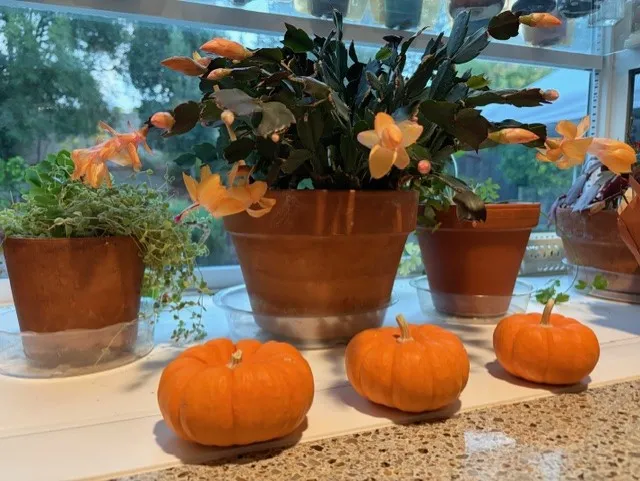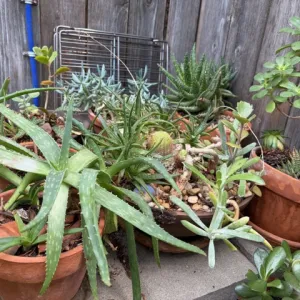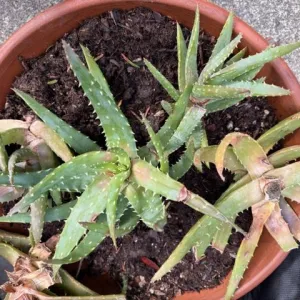
Blog article by Michelle Davis
Succulents are known for their easy, low-maintenance and drought-tolerance. Many gardeners, like me, plant them in outdoor containers because their own homes’ soil (clay, in my case) isn’t what a succulent needs. Succulents want well-draining soil. Many horticulturists recommend planting them in soil mixes designed for cacti, palms and citrus. (Indoor succulents can be potted in a good, well-draining indoor container mix.) This emphasis on ‘well-draining” is because an all-too-common cause of death for succulents is root rot from overwatering.
In addition to the soil requirements, succulents also usually need bright light and warmth. About 6 hours per day is recommended. There are exceptions. Some are able to tolerate freezing temperatures in the ground outdoors and even others prefer a little shade and cooler temperatures.

If your succulents are going to be outside in containers during the winter, what can you do to keep them alive through rain and cold? Ideally, you’ll have an indoor space to over-winter them. Your “sunbird” succulents would love a warm, sunny space where they can thrive when outdoor temperatures drop to around 50 degrees. If you have the indoor space, but not the light, a grow-light could help. Be sure to check them for pests before you bring them into your home. If you don’t have that extra space or a greenhouse, you can relocate them under a covered porch or tuck them under the eaves for rain protection. A south-facing wall or porch where they can still get some sun will help keep them warm.
Wherever they spend the winter, you will still need to check periodically to see if they need water. If the succulent leaves look wrinkled, your plant may need water. Try inserting a plain wooden chopstick in the container’s soil. If it comes out without any soil stuck to the chopstick, the plant needs water. Once watered, don’t leave the container in any standing water.
My own container succulents will need to be outdoors both to get enough light and to be away from my dogs. While not all succulents are toxic to pets, no one wants to make a trip to the emergency veterinarian. Among my succulent collection, I have aloes, agaves, sansevierias and a jade plant (Crassula). Any of these, when consumed, are poisonous to dogs and cats. Kalanchoe, senecio and euphorbia are also toxic. Mine are currently in an outdoor area against a west-facing fence on a raised platform inaccessible to the dogs.
I think my solution to overwintering them is to cover them with a clear waterproof drape that doesn’t touch the plants but blocks out the rain. When it gets colder, I can add a frost protection cover – almost a temporary, homemade greenhouse.

